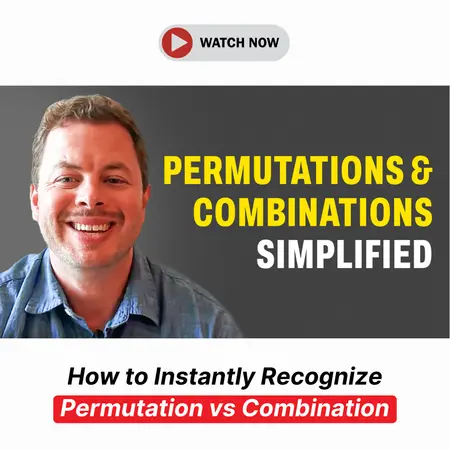Events & Promotions
|
|

GMAT Club Daily Prep
Thank you for using the timer - this advanced tool can estimate your performance and suggest more practice questions. We have subscribed you to Daily Prep Questions via email.
Customized
for You
Track
Your Progress
Practice
Pays
Not interested in getting valuable practice questions and articles delivered to your email? No problem, unsubscribe here.
- Nov 20
07:30 AM PST
-08:30 AM PST
Learn what truly sets the UC Riverside MBA apart and how it helps in your professional growth - Nov 22
11:00 AM IST
-01:00 PM IST
Do RC/MSR passages scare you? e-GMAT is conducting a masterclass to help you learn – Learn effective reading strategies Tackle difficult RC & MSR with confidence Excel in timed test environment - Nov 23
11:00 AM IST
-01:00 PM IST
Attend this free GMAT Algebra Webinar and learn how to master the most challenging Inequalities and Absolute Value problems with ease. - Nov 25
10:00 AM EST
-11:00 AM EST
Prefer video-based learning? The Target Test Prep OnDemand course is a one-of-a-kind video masterclass featuring 400 hours of lecture-style teaching by Scott Woodbury-Stewart, founder of Target Test Prep and one of the most accomplished GMAT instructors.
D
Be sure to select an answer first to save it in the Error Log before revealing the correct answer (OA)!
Difficulty:
 25%
(medium)
25%
(medium)
Question Stats:
68% (00:55) correct 32%
(01:05)
wrong
32%
(01:05)
wrong  based on 3755
sessions
based on 3755
sessions
History
Date
Time
Result
Not Attempted Yet
While digging in the Egyptian desert, huge fossil bones have been found by paleontologists, which appears to have been the second most massive dinosaur that ever lived.
A. huge fossil bones have been found by paleontologists, which appears to have been
B. huge fossil bones have been found by paleontologists, which appear to be from
C. it appears that paleontologists have found huge fossil bones that are from
D. paleontologists have found huge fossil bones from what appears to be
E. paleontologists have found huge fossil bones, which are from what appear to be
A. huge fossil bones have been found by paleontologists, which appears to have been
B. huge fossil bones have been found by paleontologists, which appear to be from
C. it appears that paleontologists have found huge fossil bones that are from
D. paleontologists have found huge fossil bones from what appears to be
E. paleontologists have found huge fossil bones, which are from what appear to be
Kudos
Bookmarks
TheRzS
Dear TheRzS,
I see that you already received a good response from my intelligent colleague sayantanc2k. I'll just add a few thoughts.
The subject of "appears" is the relative pronoun "what." The relative pronouns "who" and "what," as well as the indefinite "whoever," pose potential SVA questions, because all of these words can represent a target noun that is either singular or plural.
For example,
Whoever has/have broken the window will have to pay for it.
In that sentence, we could have either the singular or plural verb--the sentence provides absolutely no information about which is correct. Of course, the GMAT would never put us in such a position.
A somewhat more GMAT-like scenario,
Whoever has/have used the company computer account to hack into the federal server will face stiff legal penalties when discovered as well as deportation if they are not already citizens.
You see, that sentence is a bit over-the-top on this, but it makes us wait until the end until we can figure out whether indefinite pronoun at the beginning is singular or plural. Technically, though, the sentence does provide all information we need to determine the verb tense.
The moral is that when you see one of these pronouns {who, what, whoever} as a subject, you need to locate the noun to which it refers in order to determine whether it is singular or plural.
Does all this make sense?
Mike
Kudos
Bookmarks
TheRzS
Your first reasoning is correct. The pronoun "what" refers to "the second most massive dinosaur", which is singular. Hence the verb is also singular "appears".
On the other hand, the verb would be plural "appear", if "what" referred to a plural noun.
... what appear to be two large dinosaurs.... correct.
... what appears to be two large dinosaurs... wrong.










